Pure Air Go electric scooter review
Two-minute review
Pure Electric put out the best entry-level electric scooter in 2020 with its Pure Air (2020), a fantastic vehicle with a low price, solid build and sleek design. The company’s 2021 range of electric scooters has an upgraded Air model, but also the Pure Air Go, a new vehicle that’s even more expressly designed for first-time buyers.
The Pure Air Go is the cheapest electric scooter Pure Electric has released, out of the two 2020 and three 2021 models (the Go is joined by the mid-range Air and the top-end Air Pro (2021)). It’s designed for people who aren’t sure if such a new form of vehicle is really for them, and who want a low-power low-cost option.
As such, this isn’t a powerful electric scooter. It has a 350W motor, like the 2020 models but unlike its 500W-motor-toting 2021 siblings. The battery isn’t huge, with a 20km maximum range, and it misses out on some premium features like a USB charging port or easily openable folding latch.
That’s not to say this is a severe downgrade from other electric scooters. The maximum speed is 25kmph – that’s the scooter speed limit in the UK, where Pure Electric is based – and lots of the trappings of other Pure scooters, like sturdy waterproofing and loads of lights and reflectors to keep you safe.
In fact, if you’ve never driven an electric scooter before, or have only tested them briefly in ride-hiring schemes but want your own, we can hesitantly recommend the Pure Air Go.
That hesitation is because of the range, which is one of the lowest we’ve seen on an electric scooter. That short distance makes sense if you want your first scooter for short trips now and then, but if you want the Go for a commuter device, it might not be enough.
You see, a 20km range can only be reached if you’re driving in the scooter’s lowest-speed mode, at about 15kmph, but if you bump up to the higher-speed settings you’re going to travel as far. We regularly managed to ride for about 7km before running out of charge.
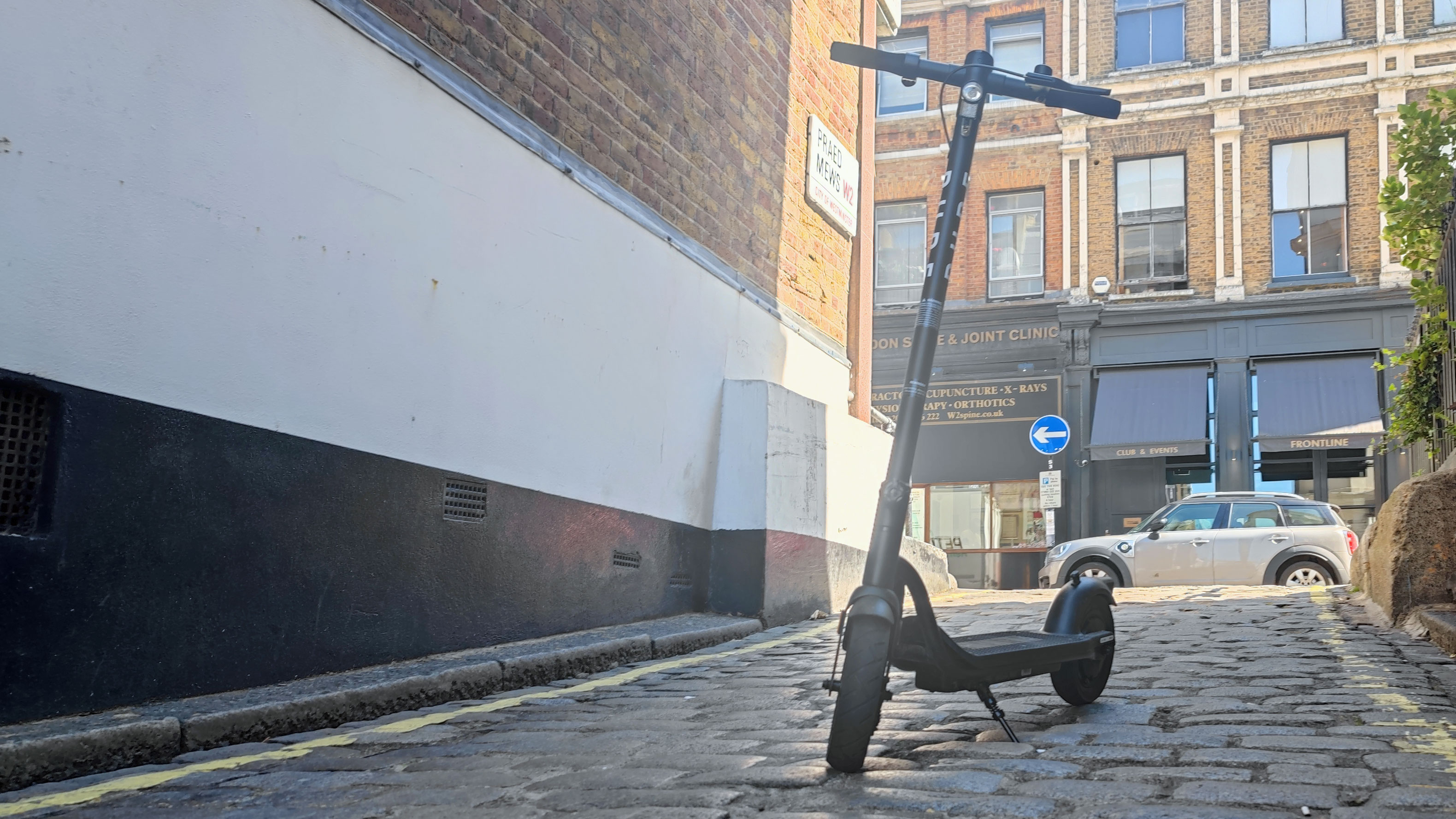
The scooter also struggled on steeper hills in our testing thanks to the weaker motor, though of course, not everyone needs a scooter that can power up inclines. We’re just highlighting it for the people who don’t live in flat areas.
Our biggest reason against buying the Pure Air Go would be if the Pure Air looks more appealing to you. It has a better range, more powerful motor and a price which isn’t that much higher. Check your budget, and the kind of environment and distance you’d be riding the scooter, to decide which is better for you.
Pure Air Go price and availability
The Pure Air Go can be bought from the Pure Electric website here, as well as from the company’s various physical shops around the UK. If you live near one, we’d recommend heading into a shop, so you can see the scooter first-hand and speak to a professional about your needs.
The scooter costs £349 (about $480 / AU$650), so it’s the cheapest of its range, including its predecessors. Those 2020 models aren’t on sale now, but the chart below will show you how all five Pure scooters stack up against each other (and their prices).
| Metric | Pure Air Go | Pure Air (2020) | Pure Air (2021) | Pure Air Pro (2020) | Pure Air Pro (2021) |
|---|---|---|---|---|---|
| Price | £349 | £399 | £449 | £679 | £599 |
| Max speed | 25kmph | 25kmph | 25kmph | 25kmph | 25kmph |
| Range | 20km | 30km | 30km | 36km | 50km |
| Motor | 350W | 350W | 500W | 350W | 500W |
| Weight | 16kg | 16.5kg | 17kg | 17kg | 16.5kg |
| Extras | USB port | USB port |
Design
The Pure Air Go doesn’t exactly shake up the electric scooter design formula very much – something we imagine most first-time buyers will be glad of. In fact, the design is almost exactly identical to the Pure Air (2021) with a few tweaks here and there.
The foam-grip handlebars at the top have a bell on the left side, an accelerator button on the right, and a central-mounted display that tells you your speed, battery level and light status. There’s a rubber button here that you can use to toggle the lights or change your speed mode.
Looking down the 119cm-high stem – which comes in black or gray – you'll see a latch that you can use to fold up the scooter. Unlike in the Pro models, this isn't a clamp, so you have to unscrew and unfasten the latch when you want to fold, or unfold, the scooter. This is a little more time-consuming than the Pro’s easy catch, but it still only takes a minute or so out of your day.
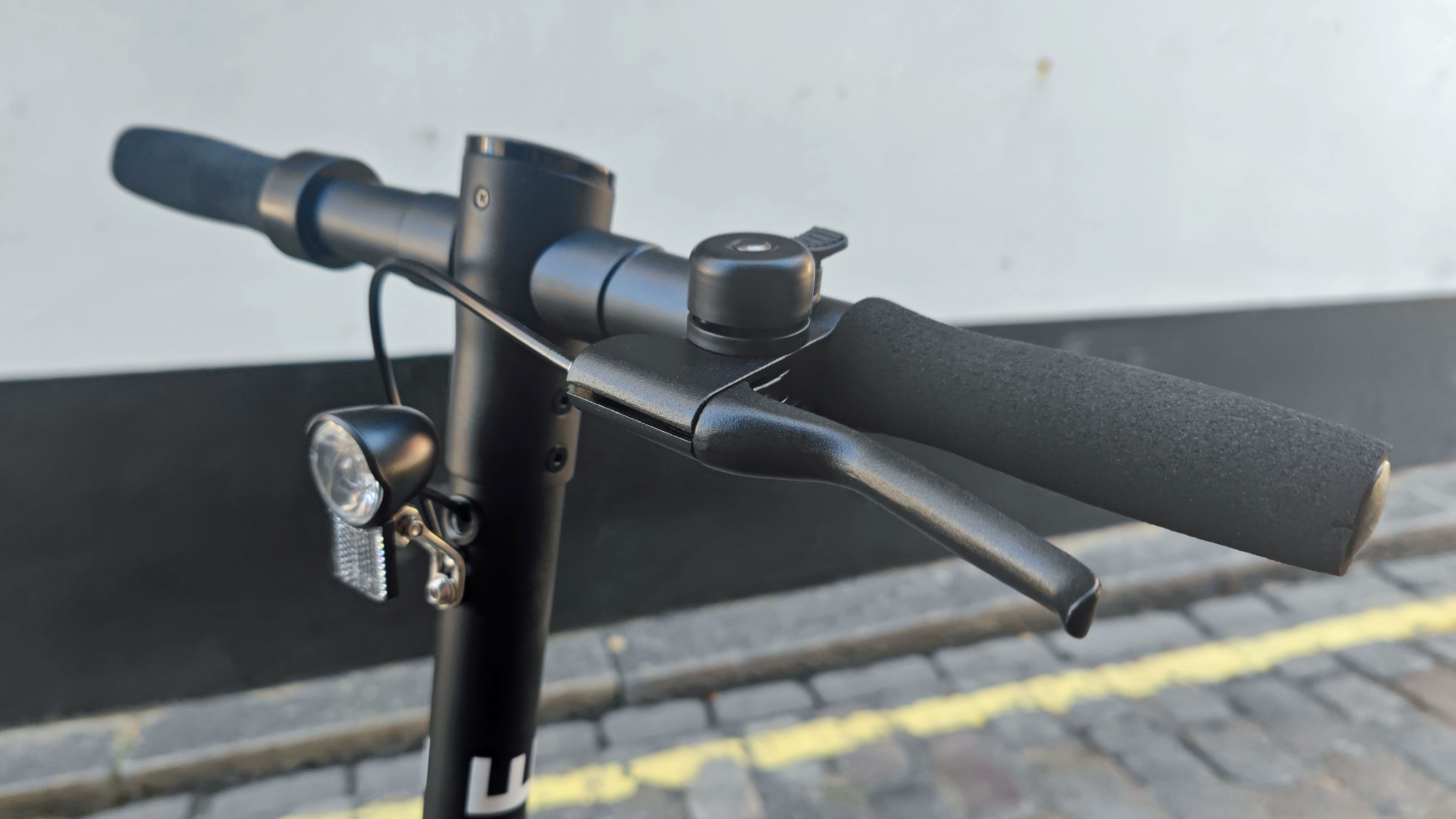
The scooter’s deck has dimensions of 116 x 50cm, similar to most other scooters, and it’s easy to get a good balance on. There’s good grip too, thanks to the texture underfoot.
Underneath the deck is a stand that you can kick out to keep the scooter standing unassisted; we found this easy enough to use and to support the scooter. There's also the charging port.
Like Pure’s other scooters, the Air Go is rated IP65, which means good resistance against water and dust. We frequently rode the vehicle in rain and through puddles, without it giving up on us. The innards are also easily replaceable too in case something does break, though if you’re considering buying an entry-level scooter we’d definitely recommend getting a professional to fix things if they go wrong.
If you’re worried about your visibility when riding, you’ll be glad to know that the Pure Air Go is well lit. There’s a front and back light, on the handlebars and rear wheel respectively, and the front wheel also has reflectors.
The wheels have a diameter of 10 inches, which is fairly big for a scooter, and are filled with air and puncture prevention fluid. We drove over some tough terrain and obstacles and the tires weren’t damaged, much to our surprise.
Portability
Using the aforementioned latch, you can fold down the Pure Air Go and carry it around. The scooter weighs 16kg, so it’s not exactly as light as air, but it’s not as hefty as some of Pure’s other vehicles either.
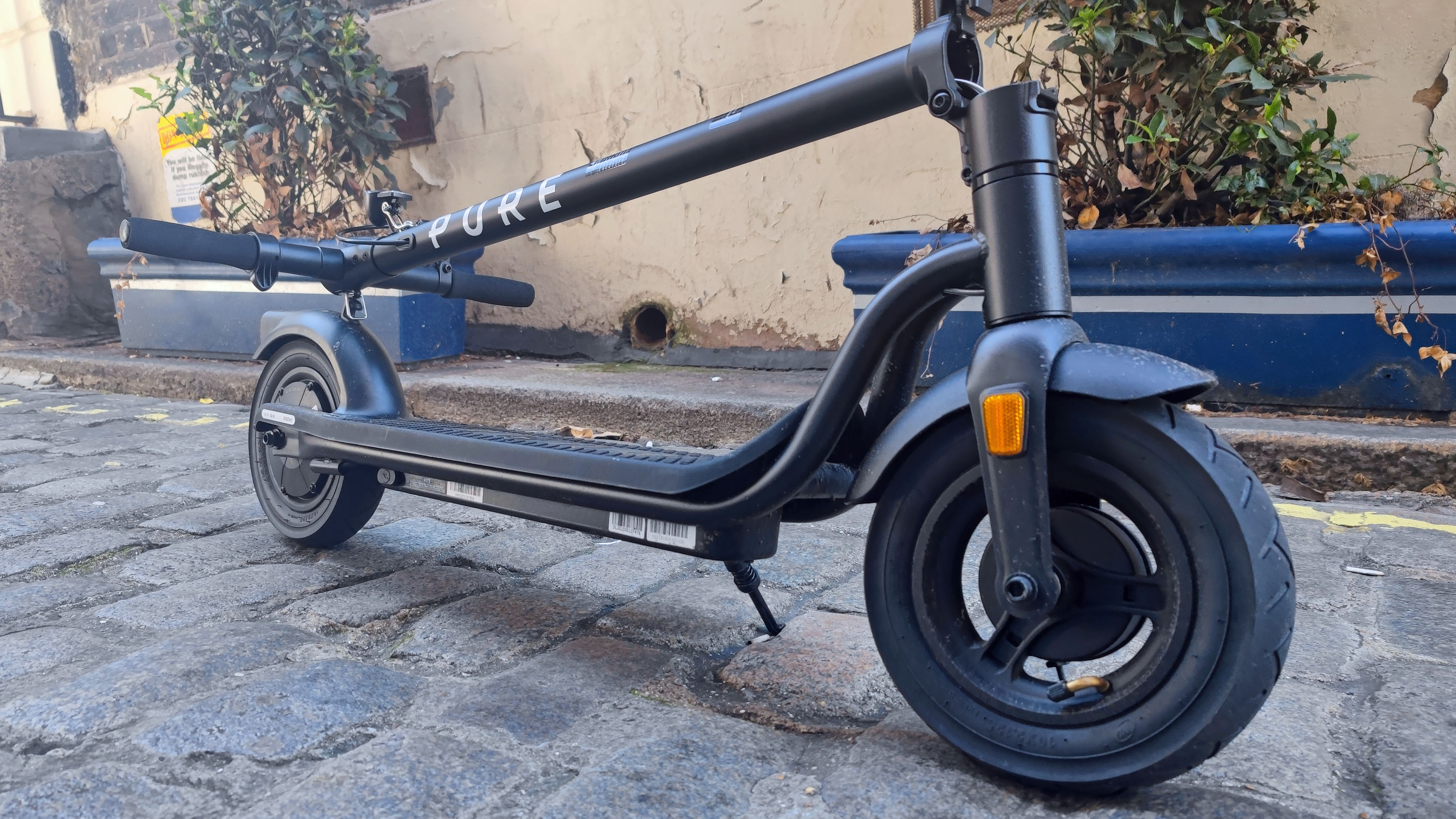
A ring near the handlebars, and a hook on the rear wheel’s mudguard, connect together to keep the scooter folded, and they felt solid when in place, so we weren’t scared of them breaking when we were carrying the vehicle around.
There’s no way of bolting up the Pure Air Go, with no convenient place on the scooter to put a bike lock or similar, and while you can use the app to secure the scooter, it can’t do much to stop someone picking the thing up and walking away with it. So it’s best to store the Go indoors if possible.
Battery
The Pure Air Pro is designed as an entry-level feature-light scooter, so the main issue we came across during our testing was the vehicle’s limited battery life, or range.
The quoted range is 20km, but you’ll only get that if you’re riding in the slowest speed mode at 15kmph. Bump that up to the middle 20kmph mode, or the fastest 25kmph (which, let’s face it, you probably will be using, since even that’s a little slow for some roads), and the range will drop significantly.
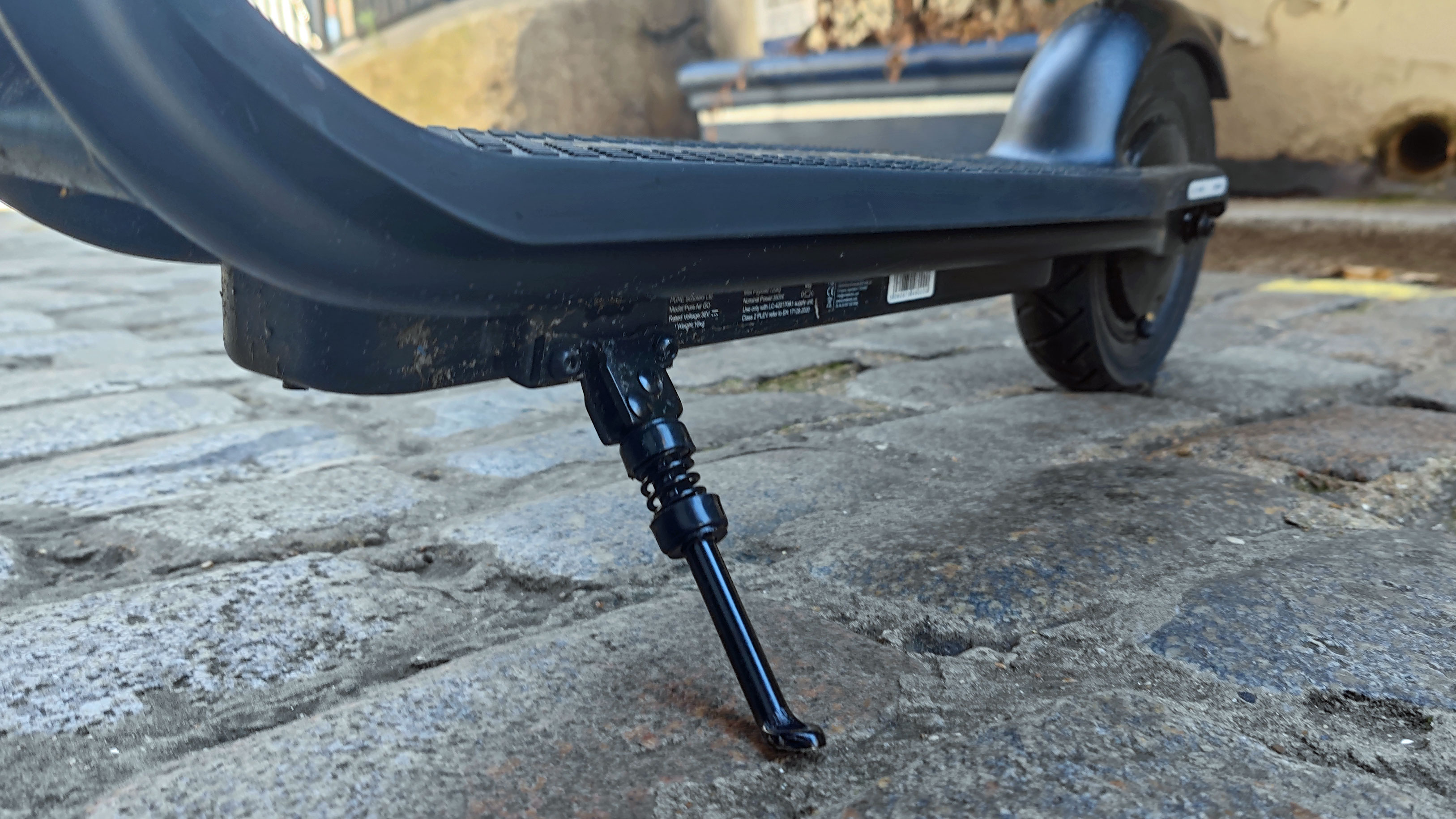
Our normal commute is just over 7km. If we were lucky, we’d just about have two battery bars left on the display – usually it was just one bar left, and on multiple occasions, the battery icon was totally depleted, and flashing to tell us to hurry up. Through many weeks of testing, we never once totally ran out before reaching our destination though.
This did necessitate lots of charging though. Pure quotes a 3.5-hour powering time to get the vehicle from empty to full, which we’d concur with, and that’s pretty quick compared to some other electric scooters.
Riding
Riding on the Pure Air Go felt safe, and the scooter was sturdy on roads and reliable in terms of controls. That’s the case with all Pure scooters.
There are three riding modes, with each one increasing the speed but also the battery drain. The lowest takes you at 15kmph, the medium one maxes out at 20kmph, and the final one lets you travel at the scooter’s max speed of 25kmph.
Acceleration on the Pure Air Go is a little slow, at least compared to other electric scooters on the market, but as an entry-level vehicle that’s actually a good thing - it helps you keep in control as you increase your speed. You don’t have to kick off too much to get the scooter moving, either.
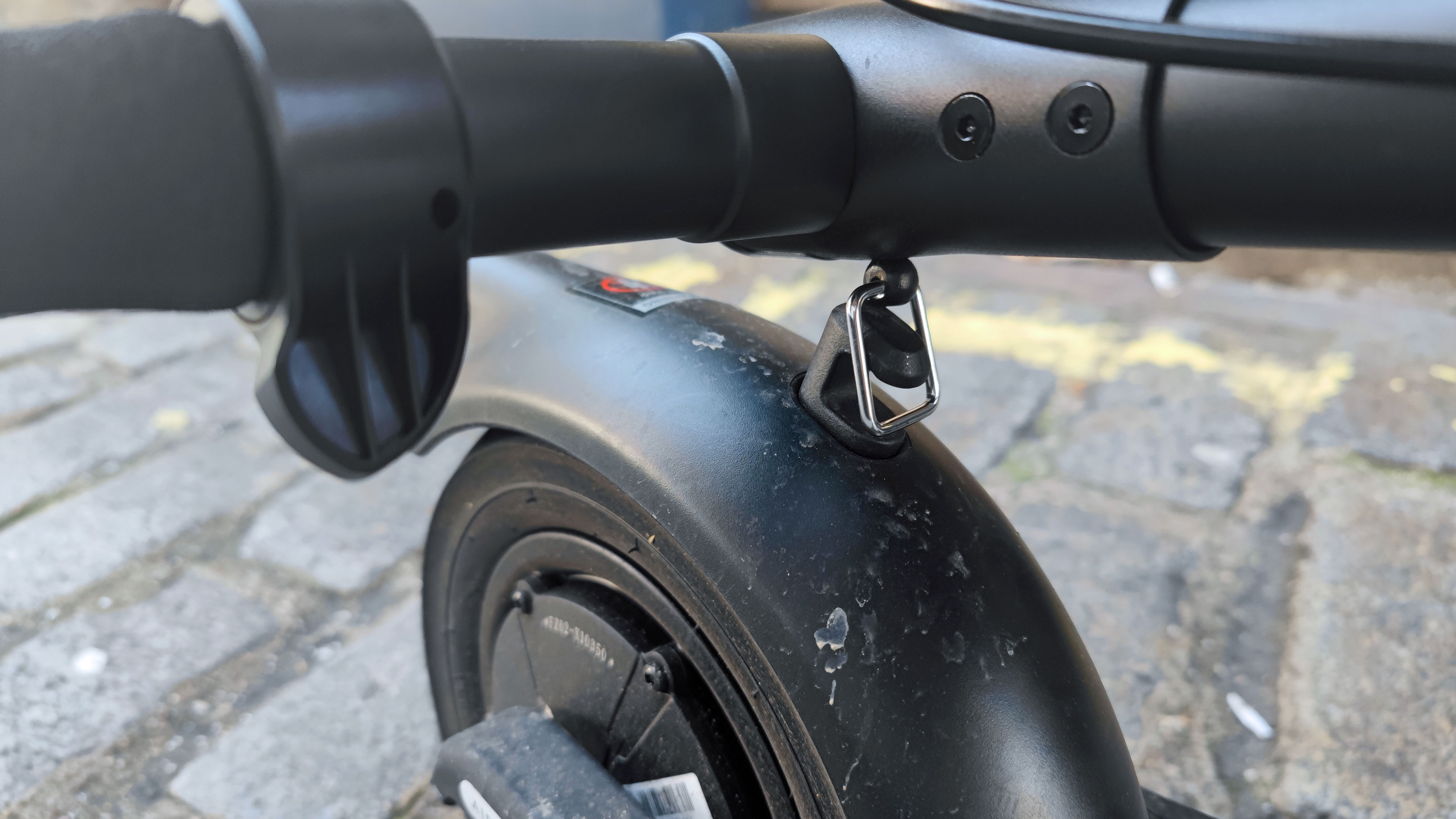
As with all Pure scooters, riding the Air Go feels like a safe experience - there’s solid suspension, the construction is robust so nothing shakes when you’re riding, and the brakes are responsive so you can stop in a pinch.
On steeper hills, the Pure Air Go’s speed did drop off quite a bit. That’s because of its 350W motor, which doesn’t handle inclines like the 500W motor of the scooter’s siblings.
One thing that some riders may find troubling – which is again a trait of Pure scooters – is that the central display button can’t be reached unless you remove your hand from the handlebars, so if you want to change your speed, or toggle the lights, it’s much safer to do so when stopped.
In addition – and this is a problem with most electric scooters, but something we should highlight since this product is for people who aren’t familiar with the vehicle – is that there’s only one accelerator and brake. If you want to indicate to turn by holding out your hand, you can’t also brake to reduce your speed or accelerate to increase it, depending on which way you’re turning. This can make turning a little tricky at times.
The alternatives, though, are to add multiple brakes and accelerators, which would increase the price of the scooter, or introduce cruise control, which is a feature only top-end scooters have, and it's rife with its own dangers. As it stands, it’s not a deal-breaker for the Go by any means, but you have to learn the knack to turning.
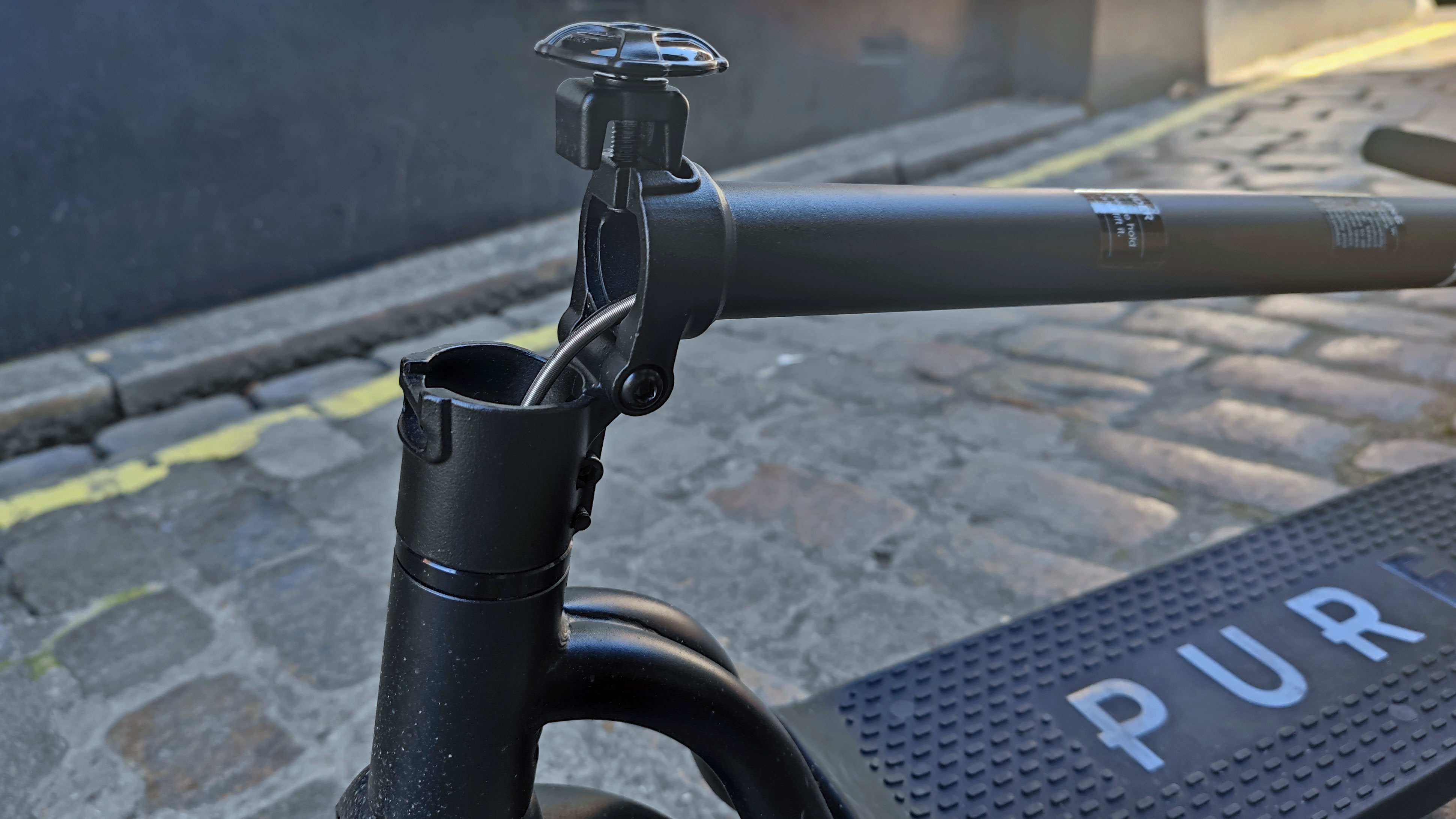
App
The Pure Electric app on your iOS or Android smartphone can connect via Bluetooth to the Pure Air Go, giving you a little extra functionality. The app is far from mandatory for riding the scooter, which is definitely a good thing in our books since apps can sometimes be temperamental.
You can see the current charge and range of the vehicle in the Pure app. This is quite a rough guess, since your speed dictates the range so much – as well as the current speed of the scooter, which only applies if you’re moving.
You can also toggle the scooter’s headlights on the app, or lock the vehicle so people can’t ride off on it. We wouldn’t rely on this as a way to secure it though, since simply picking it up and ignoring the alarm can bypass this lock.
Annoyingly, you can’t use lots of these functions unless the Pure Air Go is turned on and is near the phone, so you can’t check the charge from afar – and since the scooter itself can tell you charge and speed, and toggle the lights, we didn’t find the app too useful most of the time.
Should I buy the Pure Air Go?
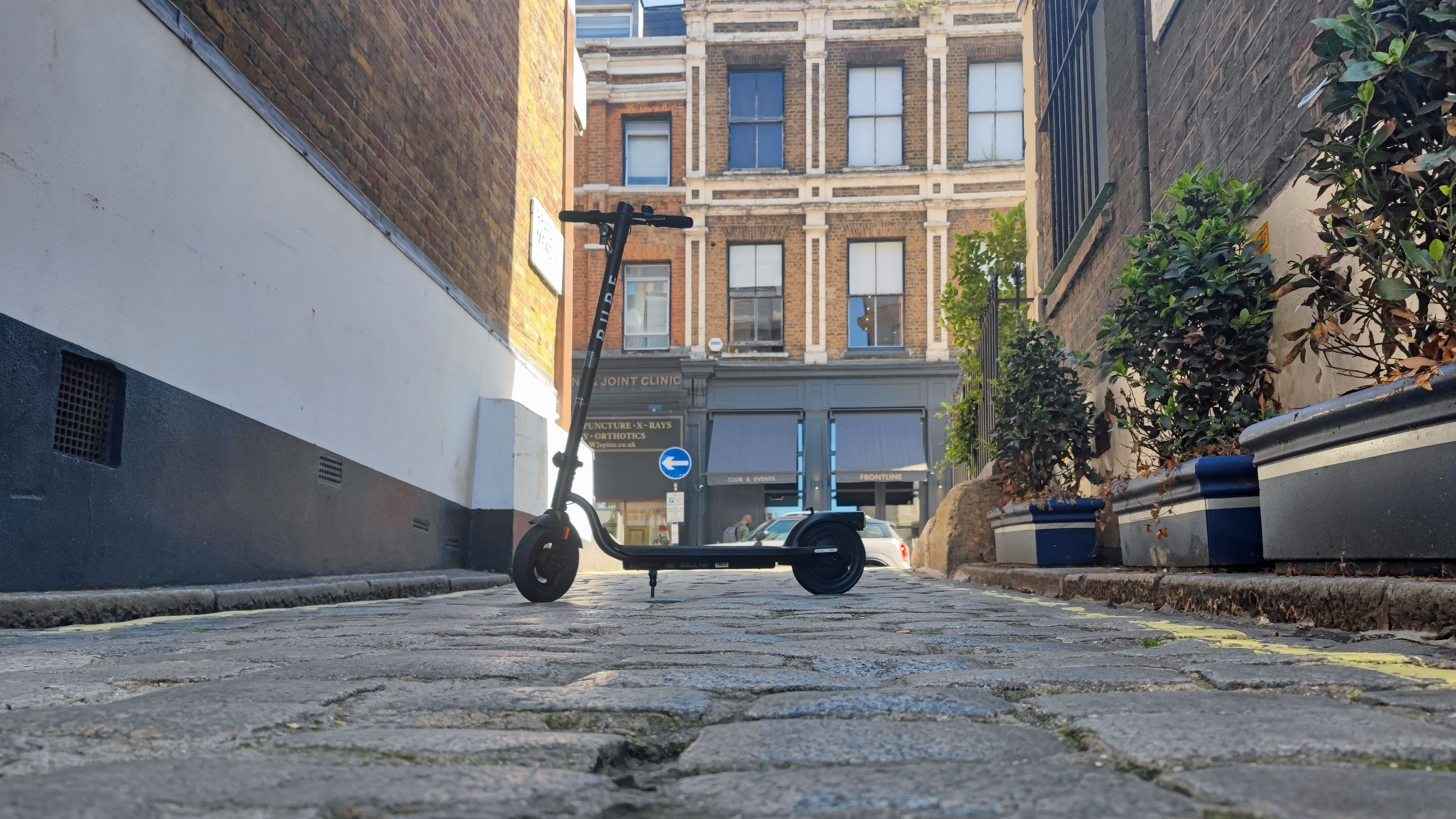
Buy it if...
You don't need to go far
With its limited maximum range, you’re not going to be going on any cross-country jaunts on the Pure Air Go, but not everyone will need to ride for long periods of time.
You're new to electric scooters
The Go is designed for people who aren’t familiar with electric scooters, with slower acceleration, a limited range and lower price. If you don’t know if scooting is for you, it’s a good jumping-in point.
You want a safe ride
With adequate waterproofing, study wheels and enough lights and reflectors to be seen from space (well, nearly), this is one of the safest electric scooters we’ve tested, only tying with other Pure ones.
Don't buy it if...
You live somewhere hilly
If you’re going to be scooting up hills a lot, we’d recommend getting the Pure Air instead of the Go, as its 500W motor will get you up those inclines easier.
You can spend a little more
While the Pure Air Go is good, its non-Go sibling doesn’t cost too much more, and comes with a much improved feature-set. If you can afford the higher price we’d definitely recommend it.
You want to drive far
Some people will find 20km far too short for their needs, and if you identify with that statement, this isn’t the scooter for you.
First reviewed July 2021
- Check out our complete guide to the best fitness trackers
0 comments:
Post a Comment